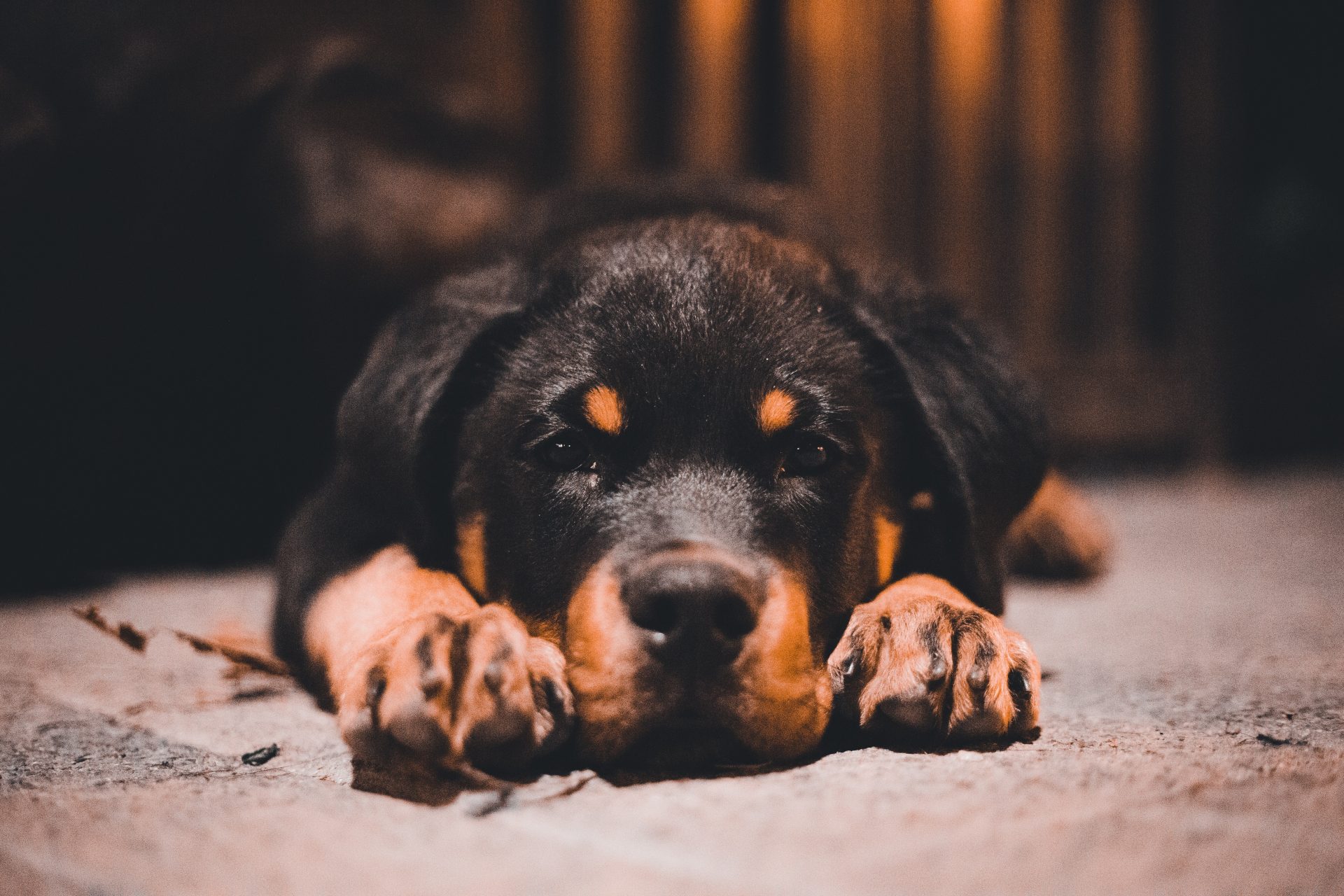Roman Rottweilers vs German Rottweilers – What’s the Difference?

The Rottweiler has captured the hearts of many dog lovers worldwide. But did you know there’s up to 5 different variations? However, for the time being we’ll just look at the Roman Rottweiler vs German Rottweiler and assess the key differences between these adorable pups.
The Rottie, a breed revered for its loyalty, strength, and protective instincts, is not as one-dimensional as it might initially seem. You may wonder, “How can a Rottweiler be anything but a Rottweiler?”
Honestly, how lucky are we? Imagine learning there are not just one, but two flavours of your favourite ice cream – double the delight, right? That’s exactly how it feels to discover the numerous variations of Rottweilers.
So, if, like me, you’re fascinated by this magnificent breed, then you’re about to discover everything you need to know and more about the German and Roman Rottweiler.
So, let’s put on our canine connoisseur hats and embark on a journey.
TL;DR Roman Rottweilers vs German Rottweilers:
- Size & Weight: Roman Rottweilers are generally larger and heavier, standing up to 28 inches tall and weighing between 110 to 130 pounds. Conversely, German Rottweilers have a smaller frame, with heights of 24 to 27 inches and weights ranging from 80 to 110 pounds.
- Coat & Appearance: Roman Rottweilers have a shorter, smoother coat, while German Rottweilers’ coat is slightly longer and thicker. Both variants have a predominantly black coat with mahogany markings, though these may be more pronounced in German Rottweilers.
- Personality & Temperament: Roman Rottweilers are known for their calm and confident demeanour, making them great family pets. German Rottweilers, however, display a more energetic and driven temperament, often fitting roles such as search and rescue, police work, and competitive obedience.
- Health Concerns: Both variants are prone to certain health conditions. Roman Rottweilers are more susceptible to hip dysplasia and obesity-related issues, while German Rottweilers are more prone to aortic stenosis and bone cancer. However, with proper care, nutrition, and regular vet check-ups, these conditions can be managed effectively.
- Shared Traits: Despite these differences, both Roman and German Rottweilers are highly intelligent, protective, and affectionate towards their families. Whether you choose a Roman or German Rottweiler, you’ll have a loyal and dedicated companion.
Roman Rottweilers vs. German Rottweilers: Size and Weight
Regarding size and weight, there are notable differences between Roman Rottweilers and German Rottweilers. For a start, Roman Rottweilers are generally larger and heavier than their German counterparts. They can reach heights of 27 to 28 inches at the shoulder and weigh between 110 to 130 pounds.
On the other hand, German Rottweilers have a slightly smaller frame, measuring around 24 to 27 inches in height and weighing between 80 to 110 pounds.
These differences can be attributed to variations in breeding standards and geographical origins.
Roman Rottweilers vs. German Rottweilers: Coat, Color, and Appearance
The coat, color, and appearance of Roman and German Rottweilers also exhibit distinct characteristics.
Roman Rottweilers tend to have a shorter and smoother coat requiring less maintenance. They typically have a solid black coat with rich mahogany markings on their face, chest, legs, and tail.
On the contrary, German Rottweilers often have a slightly longer and thicker coat that may require more grooming. Their coat colour is also predominantly black, but their mahogany markings may be more defined and pronounced.
Roman Rottweilers vs. German Rottweilers: Personality and Temperament
While Roman and German Rottweilers are known for their loyalty and protective nature, slight variations exist in their personalities and temperaments.
Roman Rottweilers are often described as calm, confident, and self-assured. They have a more laid-back demeanor and are known to be excellent family companions.
German Rottweilers, on the other hand, exhibit a more energetic and driven temperament. They are often used in working roles such as search and rescue, police work, and competitive obedience. German Rottweilers require consistent mental and physical stimulation to thrive—something to consider if you’re looking for a calm family dog.
Find out more about the fun quirks and temperament of the Rottweiler and follow. My recent research into the famous rottweiler grumble.

Roman Rottweilers Vs. German Rottweilers – Health Concerns
Both Roman and German Rottweilers are generally healthy breeds, but they are prone to certain health conditions.
Roman Rottweilers are more susceptible to hip dysplasia, a genetic condition affecting the hip joint, causing pain and mobility issues. Obesity can also be a common health problem, triggering more serious conditions such as heart disease and diabetes.
German Rottweilers are more vulnerable to aortic stenosis, a cardiac condition that can result in sudden death.
Additionally, they are predisposed to bone cancer, a challenging ailment to address.
However, it’s crucial to emphasize that with adequate care, nutrition, and exercise, both conditions can be managed, allowing them to lead long and thriving lives. By scheduling regular veterinary check-ups and promptly identifying potential health concerns, you can effectively safeguard the health and well-being of your cherished Rottweiler.
The Overlap: Common Traits of Roman and German Rottweilers
Despite their differences, when it comes to the Roman Rottweiler vs German Rottweiler, they share several common traits. Both breeds are highly intelligent, making them trainable and responsive to commands. They are known for their natural protective instincts and make excellent guard dogs. Both breeds are affectionate towards their families and form strong bonds with their owners.
Whether you choose a Roman or German Rottweiler, you can expect a loyal, loving, and dedicated companion.
Round-Up: Roman Rottweilers vs German Rottweilers
In conclusion, the distinction between Roman Rottweilers and German Rottweilers lies in various aspects such as size, coat, colour, and temperament.
While Roman Rottweilers may exhibit certain traits unique to their lineage, German Rottweilers also possess their own distinctive qualities.
Regardless of their differences, both breeds share a deep loyalty, protective nature, and capacity for forming strong bonds with their families. I love everything about the Rottweiler, regardless of its origins.
As you embark on your Rottweiler ownership journey, understanding these nuances will aid you in selecting the perfect companion to join your household.
Remember, whether it’s a Roman or German Rottweiler, this breed promises to bring joy, love, and unwavering companionship into your life for many years.
Frequently Asked Questions – The Difference Between the German and Roman Rottweiler
Let’s see what other potential owners are asking about this fabulous breed and the difference between their origins.
What is the difference between Roman and German Rottweilers?
Roman and German Rottweilers are not necessarily distinct breeds but terms used to describe Rottweilers from different regions, with slight variations in lineage and bloodlines.
Are there any significant variations in temperament between Roman and German Rottweilers?
Not entirely. The temperament of Rottweilers is strongly influenced more by individual genetics, upbringing, and socialisation than their regional classification. However, German Rottweilers are said to be more energetic, which may explain their role as service dogs.
Which type of Rottweiler is better suited for specific purposes, such as show competitions, working tasks, or as family pets?
Roman and German Rottweilers can excel in various roles depending on their qualities, training, and compatibility with specific tasks or family dynamics.